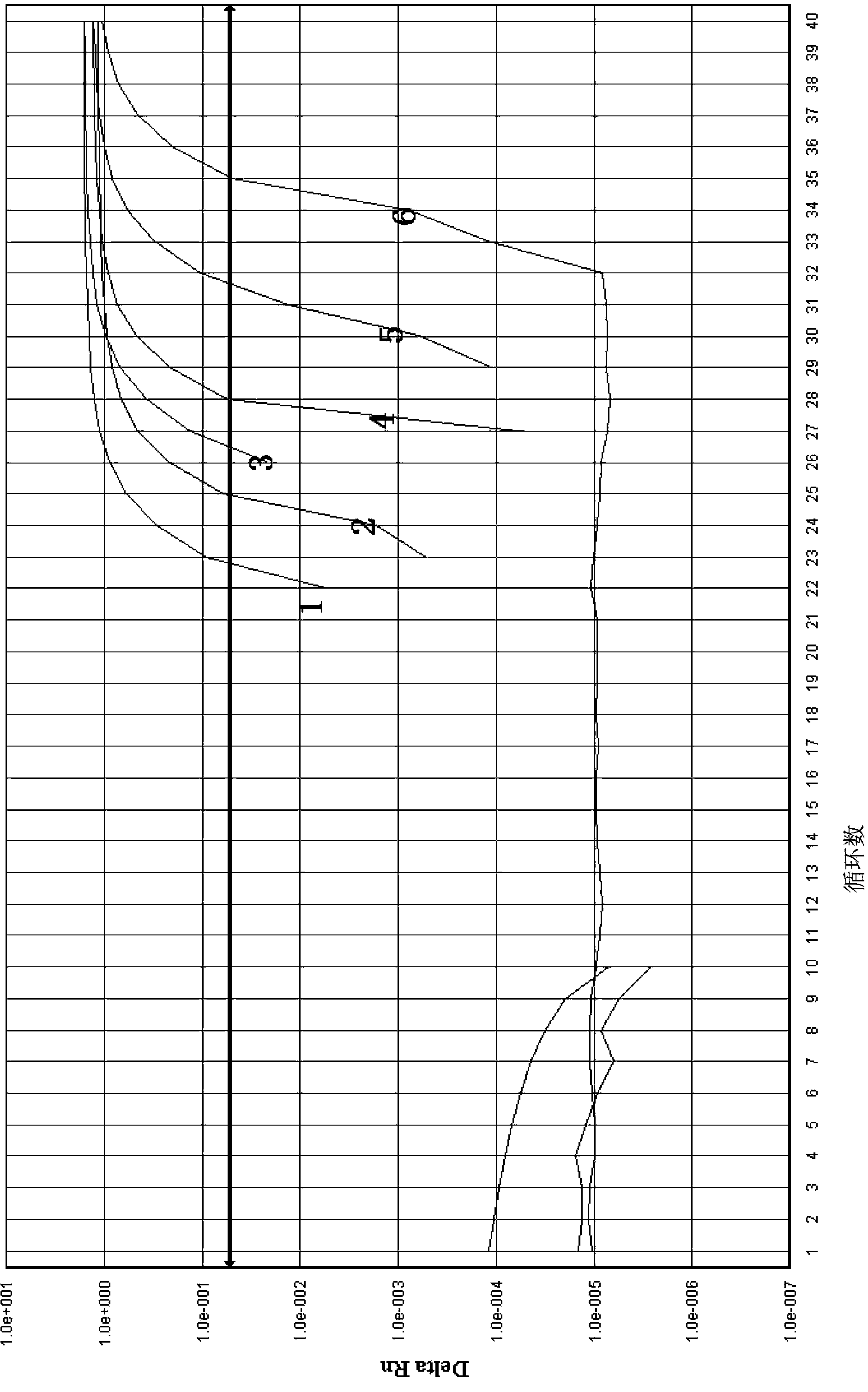Real-time polymerase chain reaction (PCR) detection primer, kit and detection method for detecting puffer fish ingredients
A detection kit and detection method technology, applied in the field of molecular biology, can solve problems such as limitations in versatility, and achieve the effects of protecting food safety, reducing detection costs, and preventing pollution
- Summary
- Abstract
- Description
- Claims
- Application Information
AI Technical Summary
Problems solved by technology
Method used
Image
Examples
Embodiment 1
[0037] In the testing process, in order to ensure the credibility of the experimental results, a positive control, a negative control, and a blank control group were respectively set up. The DNA extracted from puffer fish was used as positive control, the DNA extracted from samples known not to contain puffer fish components was used as negative control, and sterilized water was used as blank control. Two parallel reaction systems were set up for each group.
[0038] 1. DNA extraction
[0039] For the following DNA extraction methods, all reagents and solutions were prepared in conventional ways or obtained from commercial sources.
[0040] Sample DNA was extracted using the improved high-salt method. Grind the sample with liquid nitrogen, take 150 mg of the ground sample into a 1.5 mL centrifuge tube, add 400 μL of TE (containing 10 mmol / L Tris-HCl and 1 mmol / L EDTA), 40 μL of 10% SDS and 8 μL of 20 mg / mL protease K, vortex for 30s, and mix thoroughly; place the centrifuge ...
Embodiment 2
[0050] Embodiment 2 specificity test
[0051] ①Real-time PCR specific amplification of cytochrome b gene fragment of puffer fish:
[0052] Take the DNA of 42 samples listed in Table 2, and use Puffer F / Puffer R primers and Puffer P probes for real-time PCR detection. The real-time PCR amplification pattern for specific detection of puffer fish is as follows: figure 1 shown.
[0053] Samples and sources described in the embodiments of the present invention: 3 kinds of monkfish (Lophius litulon, Lophiomus setigerus, Lophius americanus), 9 kinds of puffer fish (Lagocephalus inermis, Lagocephalus lagocephalus, Takifugufasciatus, Takifugu xantopterus, Takifugu oblongus, Takifugu rubripes, Gastro gloveri, Gastrophysus lunaris, Gastrophysus spadiceus, and other 24 fish samples, 1 octopus (Octopus), 1 cod crab (Chionoecetes bairdi), 2 shrimps, 2 shellfish samples, a total of 42 samples. Specific samples See Table 2 for names and sources.
[0054] Table 2 Sample name and source
...
Embodiment 3
[0059] The sensitivity of embodiment 3 detection method
[0060] The processing of fish products will cause DNA breakage and loss, which will also affect the sensitivity of detection. In order to study the influence of the processing process on the detection sensitivity, this experiment took monkfish as the substrate, added puffer fish, and did the addition test of simulated processed products.
[0061] Puffer fish and monkfish samples were taken respectively, minced in a meat grinder, baked overnight at 80°C, and ground into powder. Puffer fish meal and monkfish meal samples were mixed according to the mass ratio of puffer fish at 100%, 10%, 5%, 1%, 0.5%, 0.1%, 0.01%, 0.001%, to obtain a series of mixed samples of fish meal with different content According to the method described in Example 1, real-time PCR detection sensitivity analysis was carried out using Puffer F / Puffer R primers and Puffer P probes. The result is as figure 2 shown. From the process of baking sample...
PUM
 Login to View More
Login to View More Abstract
Description
Claims
Application Information
 Login to View More
Login to View More - R&D
- Intellectual Property
- Life Sciences
- Materials
- Tech Scout
- Unparalleled Data Quality
- Higher Quality Content
- 60% Fewer Hallucinations
Browse by: Latest US Patents, China's latest patents, Technical Efficacy Thesaurus, Application Domain, Technology Topic, Popular Technical Reports.
© 2025 PatSnap. All rights reserved.Legal|Privacy policy|Modern Slavery Act Transparency Statement|Sitemap|About US| Contact US: help@patsnap.com



